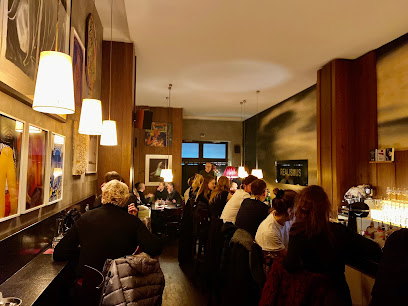
A somber tribute to the Sinti and Roma
A poignant memorial in Berlin's Tiergarten, honoring the Sinti and Roma victims of Nazi persecution and genocide, serving as a vital reminder of the horrors of the Holocaust.
The Memorial to Europe's Sinti and Roma Murdered Under Nazism in Berlin is a poignant and powerful tribute to the hundreds of thousands of Sinti and Roma people who were systematically persecuted and murdered during the Nazi regime. Located in the Tiergarten, near the Brandenburg Gate and the Reichstag, the memorial offers a space for reflection and remembrance. Designed by Israeli artist Dani Karavan, the memorial features a circular pool of water with a central, triangular stone, a stark reminder of the badges Sinti and Roma were forced to wear in concentration camps. The memorial serves as a crucial reminder of the horrors of the Holocaust and the importance of combating prejudice and discrimination against marginalized communities. The site is open 24/7 and is free to visit, offering a space for quiet contemplation and education.
A brief summary to Memorial to Europe's Sinti and Roma Murdered Under Nazism
- Simsonweg, Berlin, Mitte, 10117, DE
- Visit website
Local tips
- Take time to read the information boards surrounding the memorial to understand the historical context of the Porajmos and the systematic persecution of the Sinti and Roma.
- Visit the memorial during off-peak hours for a more contemplative experience. Early mornings or late evenings tend to be less crowded.
- Consider visiting other nearby Holocaust memorials in the Tiergarten, such as the Memorial to the Murdered Jews of Europe and the Memorial to Homosexuals Persecuted Under Nazism, to gain a broader understanding of the Nazi regime's atrocities.
Getting There
-
Public Transport
The Memorial is easily accessible via public transport. Take the S-Bahn (lines S1, S2, S25, S26) or U-Bahn (line U5) to Brandenburger Tor station. From there, it's a short walk south through the Tiergarten to Simsonweg. Alternatively, you can take bus line 100 or M41 to the Reichstag/Bundestag stop, which is also within walking distance of the memorial. A single ticket for public transport in Berlin (AB zone) costs €3.50.
-
Walking
If you are already in the vicinity of the Brandenburg Gate or the Reichstag, the memorial is easily reachable on foot. From the Brandenburg Gate, walk south into the Tiergarten. Follow the signs towards the Reichstag and then look for signs directing you to the Sinti and Roma Memorial on Simsonweg. The walk is approximately 10-15 minutes and offers a pleasant stroll through the park.
-
Taxi/Ride-Share
A taxi or ride-sharing service (Uber, Bolt) from central locations in Berlin, such as Alexanderplatz or Potsdamer Platz, to the memorial will typically cost between €10-€15, depending on traffic. Simply provide the driver with the address: Simsonweg, 10117 Berlin. Be aware that traffic can be heavy during peak hours.
Discover more about Memorial to Europe's Sinti and Roma Murdered Under Nazism
Iconic landmarks you can’t miss
Platz d. Republik
0.2 km
Discover the political heart of Berlin at Platz d. Republik, home to the iconic Reichstag and a vibrant square filled with history and culture.
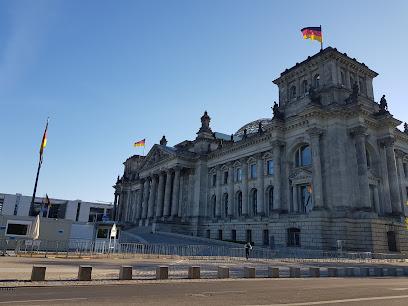
Tourist Information at Brandenburg Gate
0.2 km
Your gateway to Berlin's history and culture, located at the iconic Brandenburg Gate, offering expert travel advice, tickets, and souvenirs for an unforgettable experience.
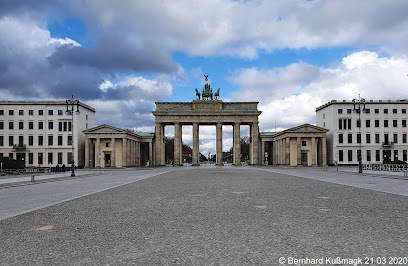
Jakob-Kaiser-Haus
0.2 km
Discover Jakob-Kaiser-Haus, a modern architectural gem in Berlin, symbolizing democracy and political heritage in the heart of Germany.

Konrad-Adenauer-Straße 1
0.3 km
Discover the stunning architecture and historical context of Konrad-Adenauer-Straße 1, a modern gem in the heart of Berlin's Mitte district.

Paul Loebe Building
0.3 km
Discover the striking Paul Löbe Building, a modern architectural gem in Berlin's political heart, showcasing the blend of design and democracy.

Goethe Monument
0.4 km
Discover the Goethe Monument in Berlin, a stunning tribute to Germany's literary genius amidst the city's vibrant cultural landscape.
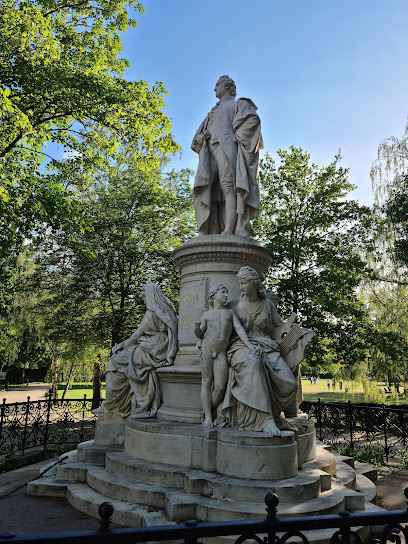
British Embassy Berlin
0.4 km
Explore the British Embassy in Berlin - a blend of modern architecture and rich diplomatic history in the heart of Germany.

Verwaltung des Deutschen Bundestages
0.4 km
Discover the rich history and stunning architecture of the German Bundestag, a pivotal symbol of democracy in Berlin's vibrant Mitte district.

Embassy of Russia in Berlin
0.5 km
Explore the Embassy of Russia in Berlin, a stunning architectural landmark on Unter den Linden, reflecting rich history and cultural diplomacy.

Bundeskanzleramt Berlin
0.6 km
Explore the Bundeskanzleramt in Berlin, a modern architectural marvel symbolizing Germany's reunification and transparent governance, set within the vibrant government district.
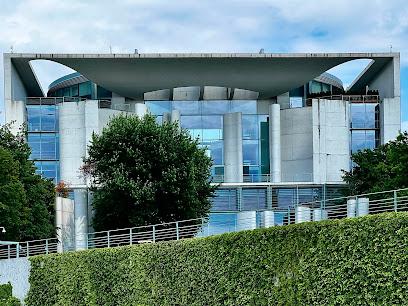
Schiffbauerdamm
0.6 km
Discover the cultural heart of Berlin at Schiffbauerdamm, where history meets vibrant entertainment and stunning waterfront views.
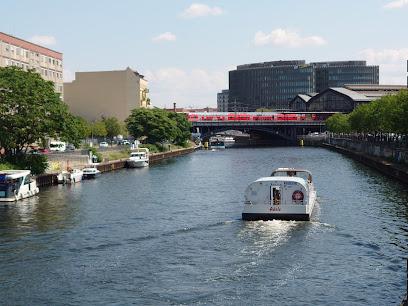
Rudolf Virchow Monument
0.6 km
Discover the Rudolf Virchow Monument in Berlin, a historical tribute that celebrates the legacy of a visionary in medicine and social reform amidst the city's vibrant culture.
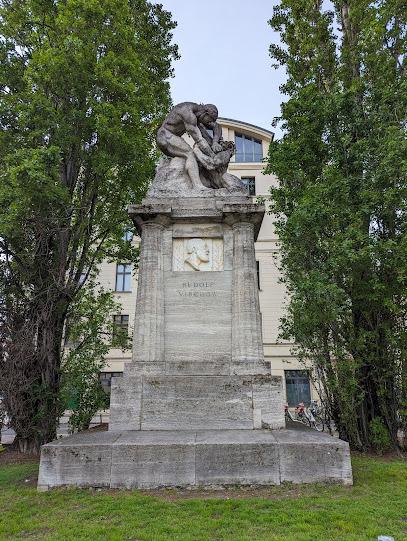
Johann Georg Elser Memorial
0.7 km
Explore the Johann Georg Elser Memorial in Berlin, a powerful tribute to resistance and courage against tyranny and oppression in history.
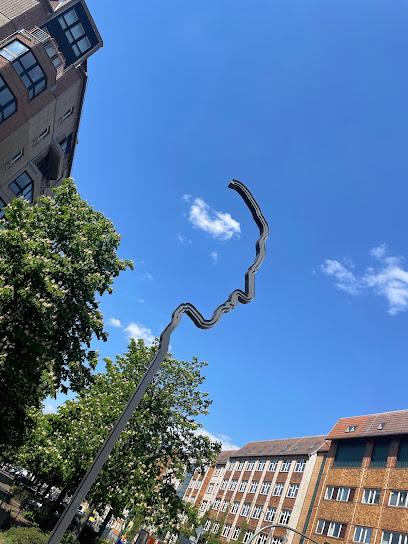
Albrecht von Graefe
0.7 km
Explore the Albrecht von Graefe sculpture in Berlin, a tribute to medical innovation and artistic mastery in the heart of the city.
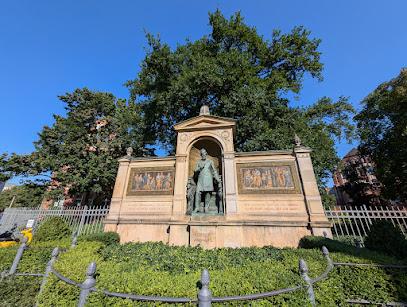
Tränenpalast
0.8 km
Experience the poignant history of divided Berlin at the Tränenpalast, the 'Palace of Tears,' a preserved border crossing offering a powerful glimpse into Cold War life.
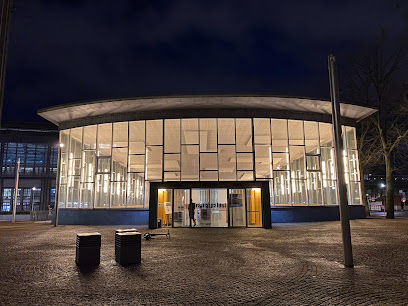
Unmissable attractions to see
Ronald Reagan Gedenktafel
0.1 km
Explore the Ronald Reagan Gedenktafel in Berlin: a historical landmark commemorating leadership and unity during the Cold War era amidst vibrant city life.
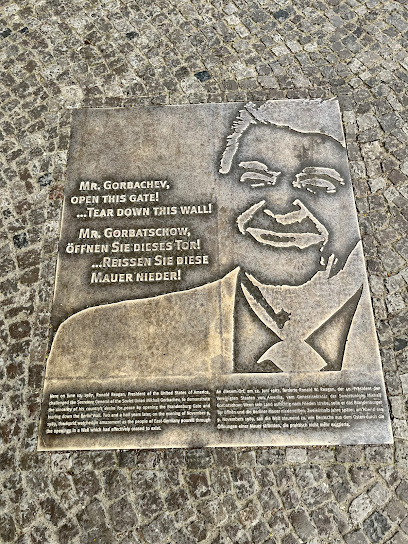
Bundestag
0.1 km
Discover the iconic Bundestag in Berlin, where politics meets stunning architecture and rich history, embodying the essence of German democracy.

Memorial to the Murdered Members of the Reichstag
0.1 km
Explore the Memorial to the Murdered Members of the Reichstag in Berlin, a poignant tribute that reflects on the strength of democracy and the importance of remembrance.
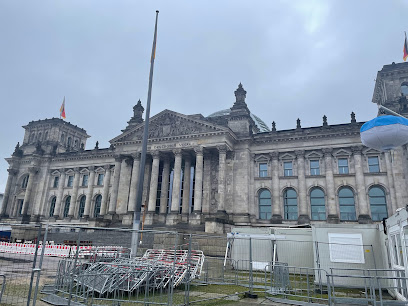
Max-Liebermann-Haus
0.1 km
Discover the artistic legacy of Max Liebermann at the Max-Liebermann-Haus, a serene cultural center in the heart of Berlin, near the Brandenburg Gate.
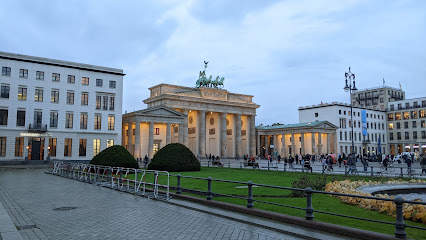
Stiftung Brandenburger Tor
0.1 km
Explore the rich artistic heritage of Berlin at Stiftung Brandenburger Tor, where history meets contemporary expression in a unique museum experience.
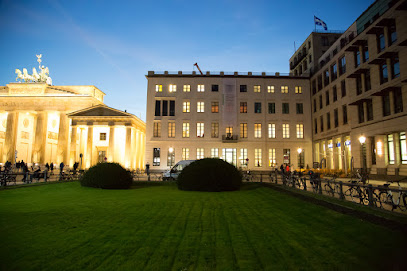
Platz des 18. März
0.1 km
Explore the vibrant history and culture at Platz des 18. März, a must-visit square in the heart of Berlin, surrounded by iconic landmarks and local charm.

Reichstag Building
0.1 km
Explore the historic Reichstag Building in Berlin, a masterpiece representing democracy with stunning views and rich political history.

Reichstagskuppel
0.2 km
Experience Berlin from above at the spectacular Reichstagskuppel, a stunning symbol of democracy with panoramic city views.
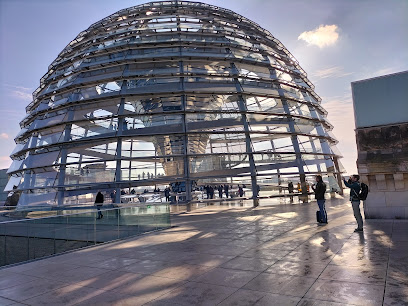
Raum Der Stille
0.2 km
Discover tranquility at Raum Der Stille, a peaceful retreat in Berlin's iconic Pariser Platz, perfect for reflection and rejuvenation during your travels.
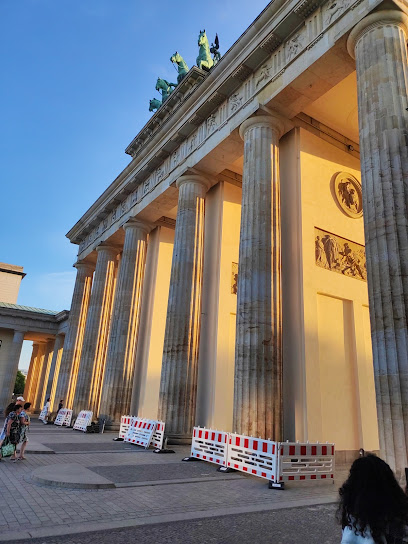
Brandenburg Gate
0.2 km
Discover the historic Brandenburg Gate, a stunning neoclassical arch symbolizing Berlin's unity and resilience, located at Pariser Platz.

Der Rufer
0.2 km
Explore 'Der Rufer', a remarkable sculpture in Berlin symbolizing peace and freedom, enriching your understanding of the city's rich history.
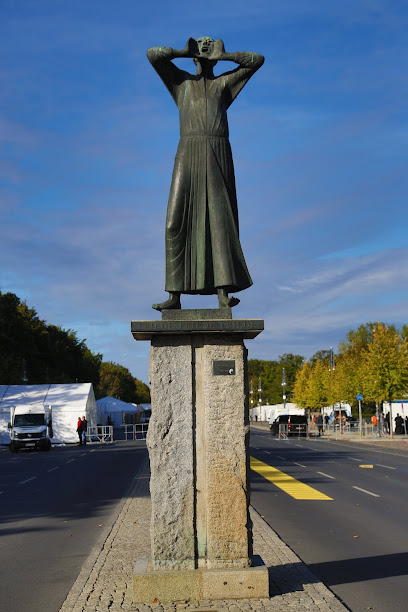
Ehemaliges Reichstagspräsidentenpalais
0.2 km
Explore the Ehemaliges Reichstagspräsidentenpalais, a historical landmark in Berlin that embodies the city's vibrant political history and stunning architecture.
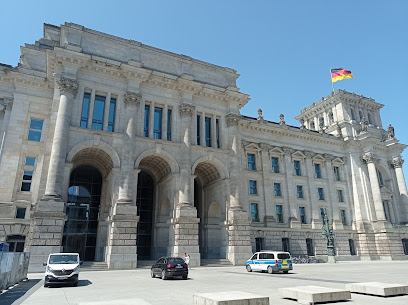
Pariser Platz
0.2 km
Explore the historical significance and architectural beauty of Pariser Platz, the iconic square at the heart of Berlin's vibrant culture.
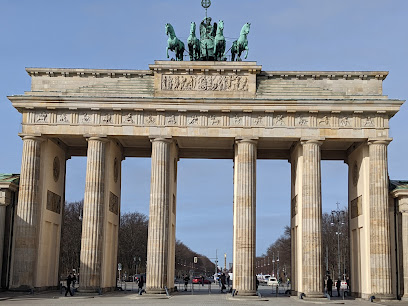
Platz der Republik
0.2 km
Discover the beauty of Platz der Republik, a serene state park nestled beside Berlin's iconic Reichstag, perfect for relaxation and exploration.
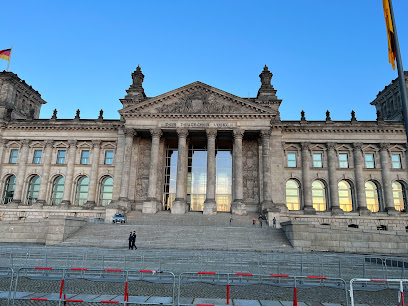
Pilecki-Institut
0.3 km
Explore the Pilecki Institute in Berlin, a museum dedicated to the legacy of Witold Pilecki and the stories of resistance during WWII.
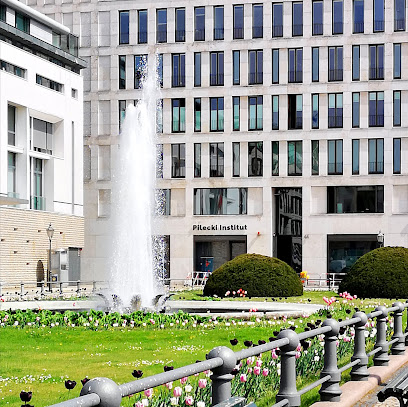
Essential places to dine
Lorenz Adlon Esszimmer
0.3 km
Experience unparalleled fine dining at Lorenz Adlon Esszimmer in Berlin – where modern European cuisine meets historic elegance.
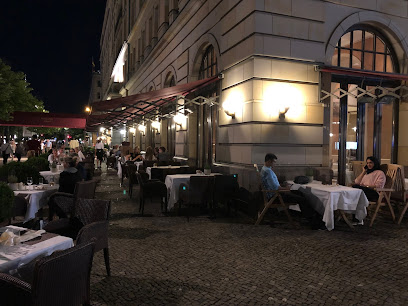
Berliner Republik
0.8 km
Discover Berliner Republik: A Culinary Haven in Berlin's Mitte District Offering Authentic German Cuisine and Lively Atmosphere.
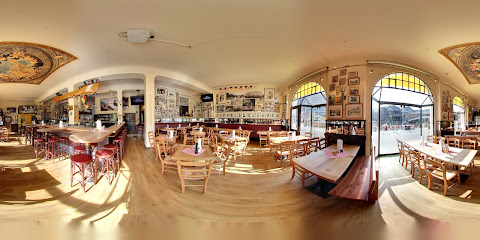
Nante-Eck
0.8 km
Experience authentic German cuisine at Nante-Eck in Berlin’s Mitte district—where tradition meets taste in a cozy atmosphere.

Bocca di Bacco
0.9 km
Experience authentic Italian cuisine at Bocca di Bacco in Berlin – where tradition meets elegance in every dish.
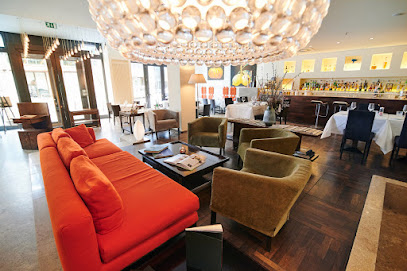
Restaurant Facil
0.9 km
Experience culinary artistry at Restaurant Facil in Berlin – where exquisite flavors meet modern elegance in fine dining.
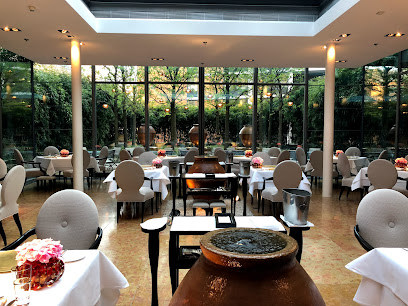
Charlotte & Fritz
1.0 km
Experience the pinnacle of fine dining at Charlotte & Fritz, where exquisite flavors meet elegant ambiance in Berlin's Mitte district.

Grill Royal
1.1 km
Experience exceptional steaks and vibrant ambiance at Grill Royal in Berlin’s Mitte district.

Boulevard Friedrichstrasse
1.1 km
Experience authentic German cuisine at Boulevard Friedrichstrasse, where tradition meets taste in the heart of Berlin.
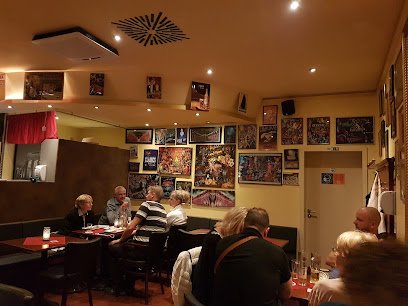
Restaurant Maximilians Berlin
1.1 km
Experience authentic Bavarian cuisine at Restaurant Maximilians in Berlin's Mitte district—where every meal is a celebration of flavor.
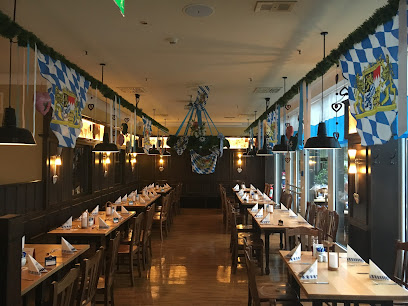
Pantry
1.3 km
Discover an eclectic dining experience at Pantry in Berlin - where fusion cuisine meets elegance in the heart of Mitte.

Johnny's Bar - Karibisches Restaurant
1.3 km
Experience authentic Caribbean flavors at Johnny's Bar in Berlin - where every dish tells a story and every sip transports you to paradise.
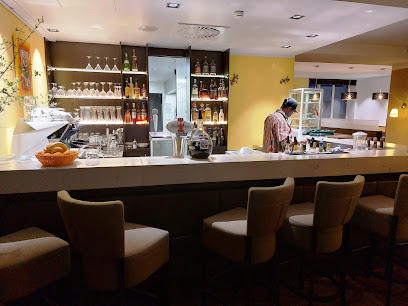
acht&dreissig
1.4 km
Savor traditional German dishes at acht&dreissig in Berlin, where authentic flavors meet inviting ambiance.
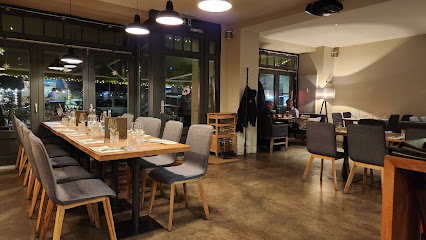
GOLVET
1.4 km
Experience unparalleled fine dining at GOLVET, where modern European cuisine meets breathtaking views in the heart of Berlin.
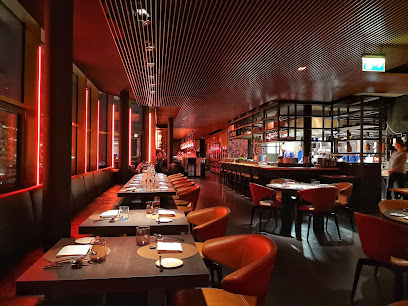
Schnitzelei Mitte
1.5 km
Experience authentic German cuisine at Schnitzelei Mitte, featuring exquisite schnitzels and tapas in Berlin's lively Mitte district.

BLESS Restaurant
1.5 km
Experience the vibrant fusion of Vietnamese and Asian cuisine at BLESS Restaurant in Berlin's Mitte district.
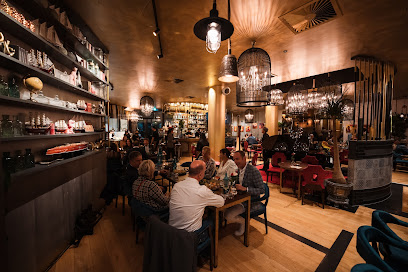
Markets, malls and hidden boutiques
BERLIN STORE
0.7 km
Discover unique souvenirs and local crafts at the Berlin Store, the perfect stop for tourists seeking a piece of the city's vibrant culture.
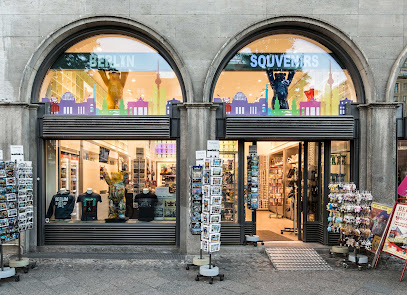
Mall of Berlin
0.8 km
Explore the Mall of Berlin: A shopping haven in the heart of the city with endless retail, dining, and entertainment options.
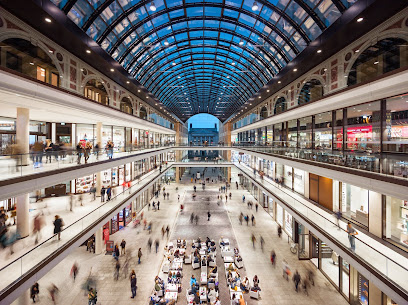
I love Berlin
0.8 km
Explore 'I Love Berlin' for unique souvenirs and gifts that embody the vibrant culture and spirit of Berlin, located in the heart of the city.

Galeries Lafayette
1.0 km
Discover the allure of luxury shopping and gourmet dining at Galeries Lafayette in the heart of Berlin, a must-visit for every traveler.
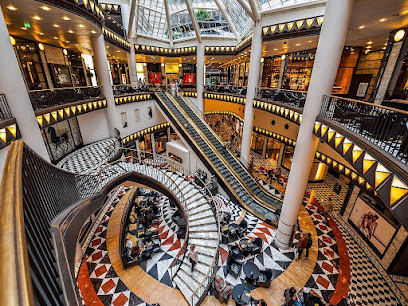
Wolford Boutique Berlin
1.0 km
Experience luxury and elegance at Wolford Boutique Berlin, your go-to destination for exquisite women's fashion and lingerie.
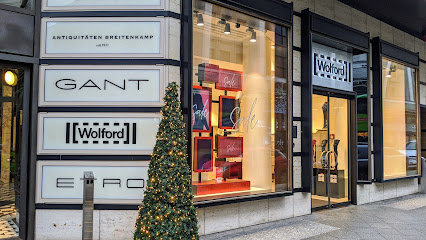
The Playce
1.1 km
Experience shopping bliss at The Playce in Berlin, where high-quality stores meet delightful dining and vibrant entertainment.
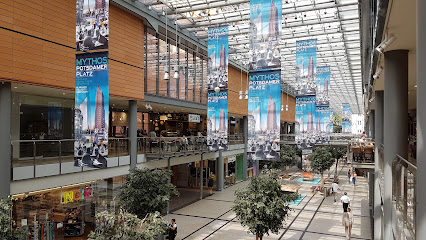
The Square Berlin East
1.2 km
Explore a unique blend of fashion, literature, and home decor at The Square Berlin East, a boutique gem in the heart of Berlin's Mitte district.

Berlin Loves You
1.3 km
Explore unique souvenirs and local treasures at 'Berlin Loves You', the quintessential store for capturing the spirit of Berlin.
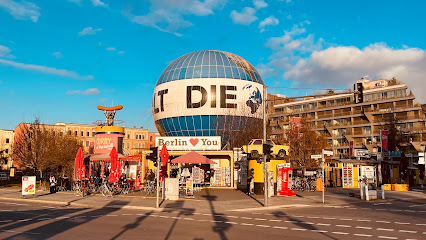
Vielfach Berlin -Das Kreativkaufhaus-
1.4 km
Explore Vielfach Berlin, a unique gift shop and art gallery offering handcrafted souvenirs and local art that capture Berlin's vibrant creative spirit.
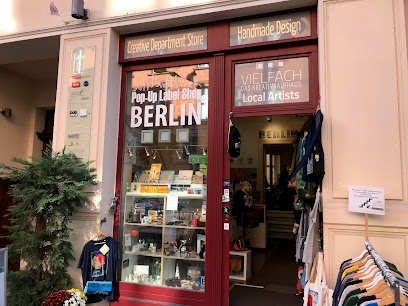
Shop Passage im Humboldt Forum
1.7 km
Explore a captivating selection of gifts and unique souvenirs at Shop Passage im Humboldt Forum, a must-visit destination in Berlin.
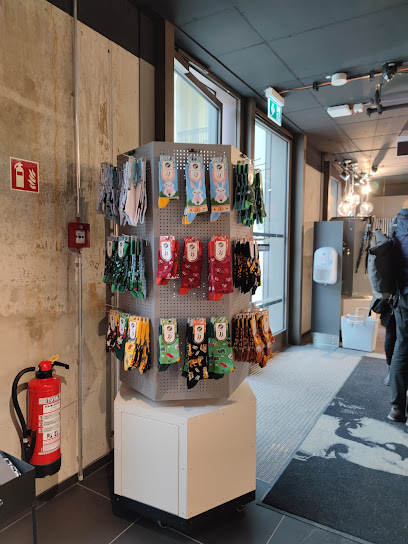
Andreas Murkudis
1.9 km
Explore avant-garde fashion at Andreas Murkudis, a unique clothing store in Berlin's Mitte district showcasing curated collections.

AMPELMANN shop in the Hackescher Markt
1.9 km
Explore the charming AMPELMANN shop in Hackescher Markt for unique Berlin souvenirs that capture the city's spirit and culture.

Redbear Berlin
1.9 km
Explore Redbear Berlin, a stylish boutique offering unique fashion pieces in the vibrant Mitte district, perfect for discerning shoppers.

Hackesche Höfe
1.9 km
Explore Hackesche Höfe, a vibrant shopping and cultural hub in Berlin, featuring unique shops, diverse dining options, and artistic experiences.

Fashionfouvintage
2.1 km
Explore Fashionfouvintage in Berlin for a unique vintage clothing experience, showcasing timeless styles from various eras that inspire and delight.

Essential bars & hidden hideouts
Windhorst
0.7 km
Experience Berlin's vibrant nightlife at Windhorst, an upscale cocktail bar serving exquisite drinks in a stylish atmosphere in the heart of Mitte.
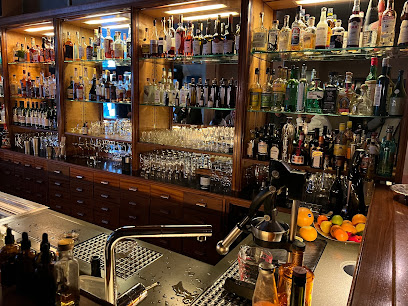
The Curtain Club
0.8 km
Experience elegance at The Curtain Club, Berlin's premier bar with exquisite cocktails and a chic atmosphere in the heart of Potsdamer Platz.

Posh Bar
1.0 km
Discover the elegance of Posh Bar in Berlin, where expertly crafted cocktails meet a chic atmosphere in the heart of the city's nightlife.
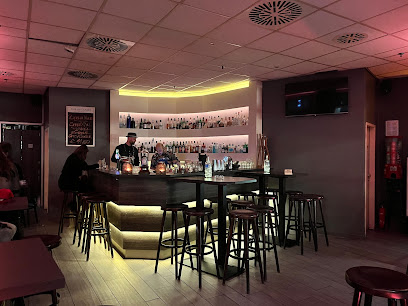
meisterschueler
1.1 km
Discover Meisterschueler in Berlin – a captivating cocktail bar that intertwines art and mixology for an unforgettable experience.
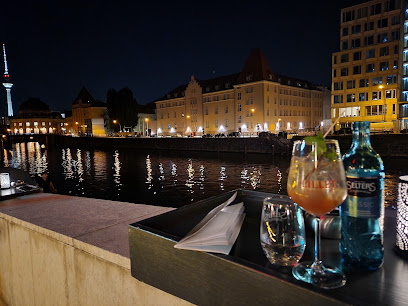
Newton Bar
1.1 km
Experience the vibrant nightlife of Berlin at Newton Bar, where stylish cocktails and a chic atmosphere await in Mitte.
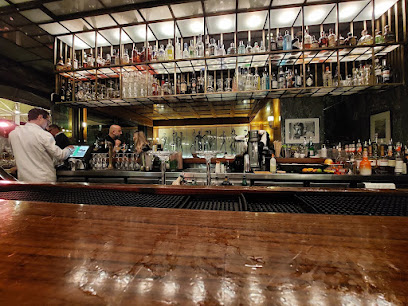
Melody Nelson bar
1.3 km
Discover the vibrant atmosphere of Melody Nelson, Berlin's chic bistro and cocktail bar, perfect for unwinding and socializing.
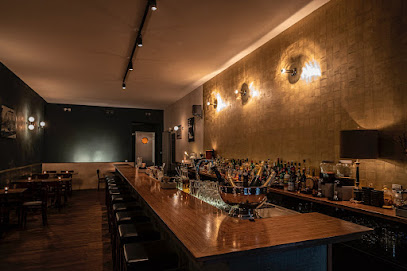
X-Terrain
1.4 km
Discover the eclectic vibe of X-Terrain, a unique bar in Berlin's Mitte with creative cocktails and a lively atmosphere perfect for nightlife enthusiasts.

Bar Amélie
1.4 km
Discover Berlin's vibrant cocktail scene at Bar Amélie, where expertly crafted drinks meet a cozy atmosphere in the heart of the city.
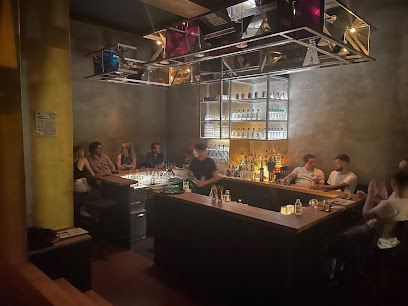
Charlie's Beach
1.4 km
Discover the perfect blend of relaxation and excitement at Charlie's Beach, a vibrant bar in Berlin's Mitte district with delightful drinks and a lively atmosphere.
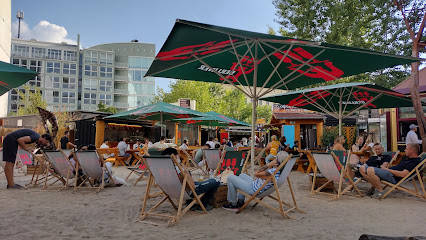
Reingold
1.5 km
Experience the vibrant nightlife of Berlin at Reingold, a cocktail bar in Mitte known for its expertly crafted drinks and lively atmosphere.

TheCoven Bar
1.8 km
Discover the allure of TheCoven Bar, a cocktail haven in the heart of Berlin's Mitte district, where innovative drinks meet enchanting ambiance.

My Bar ICI
1.8 km
Discover the vibrant atmosphere and exquisite drink selection at My Bar ICI, a must-visit bar in the heart of Berlin's Mitte district.
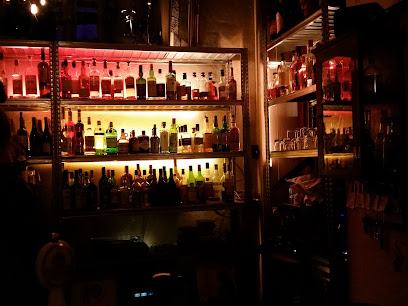
The Unique Bar Berlin
1.9 km
Discover the vibrant nightlife at The Unique Bar Berlin, where exquisite cocktails and a stylish atmosphere await you in the heart of the city.

Berlin Icebar
1.9 km
Discover the magic of Berlin Icebar, where cocktails meet ice sculptures for a unique nightlife experience in the heart of the city.
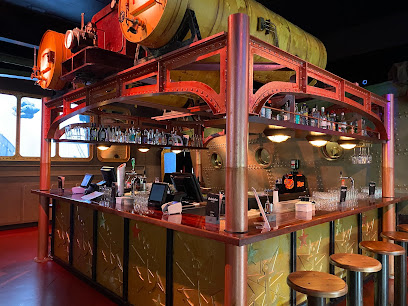
Victoria Bar
2.0 km
Experience the vibrant nightlife of Berlin at Victoria Bar, known for its exquisite cocktails and stylish atmosphere.
